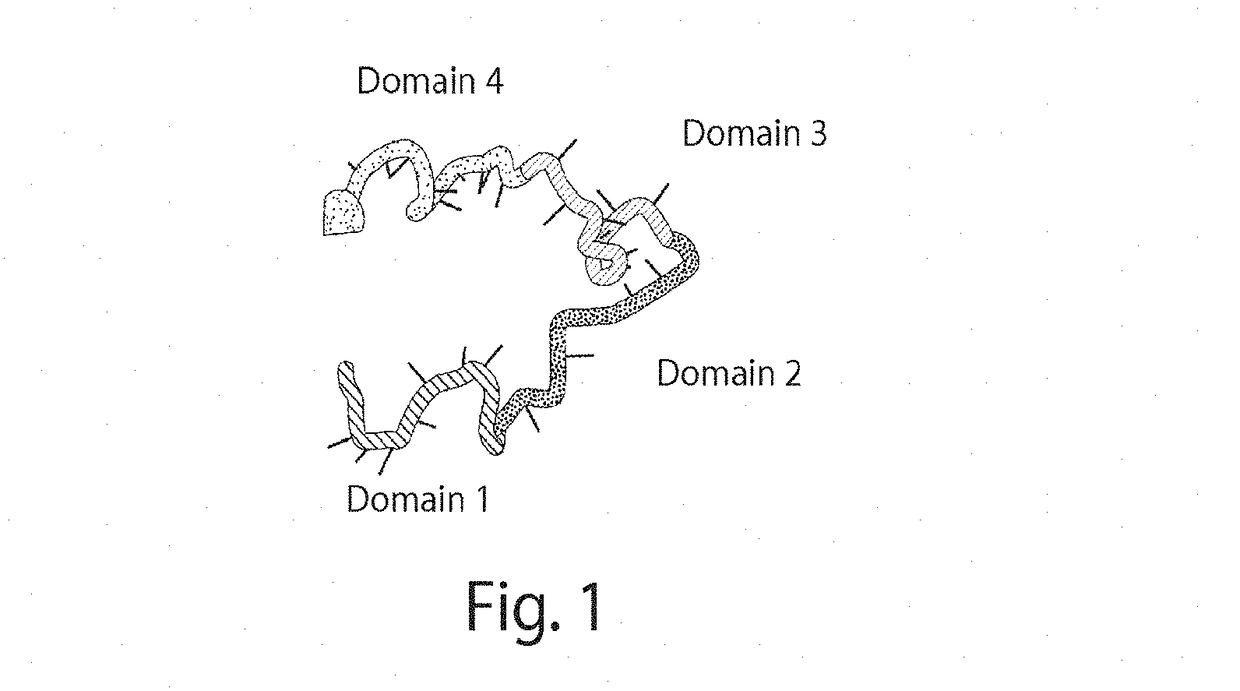Compositions and methods relating to nucleic acid nano- and micro-technology
a technology micro-technology, applied in the field of nucleic acid nano-structure synthesis, can solve the problems of limited versatility, limited work, limited work, etc., and achieve the effect of facilitating structure modification
- Summary
- Abstract
- Description
- Claims
- Application Information
AI Technical Summary
Benefits of technology
Problems solved by technology
Method used
Image
Examples
example 1
Materials and Methods
[0132]Sample preparation. DNA strands were synthesized by Integrated DNA Technology, Inc. or Bioneer Corporation. To assemble the structures, DNA strands were mixed to a roughly equal molar final concentration of 100 nM per strand species for most of the structures (except for different shapes based on a 24H×28T rectangle, which were prepared in 200 nM) in 0.5×TE buffer (5 mM Tris, pH 7.9, 1 mM EDTA) supplemented with 12.5 or 25 mM MgCl2. The concentrations were based on the manufacturer spec sheet, and no additional in-house calibration was performed. Thus, the stoichiometry for the strands was not tightly controlled. The mixture was then annealed in a PCR thermo cycler by cooling from 90° C. to 25° C. over a period of 17-58 hours with different cooling programs. The annealed samples were then applied to a 1.5 or 2 percent agarose gel electrophoresis (gel prepared in 0.5×TBE buffer supplemented with 10 mM MgCl2 and pre-stained with SYBR safe) in an ice water ba...
example 2
[0139]Using the methods described herein, we have used a plurality of single stranded oligonucleotides to build DNA structures as large as those made from the prior art DNA origami approach. More specifically, we have self-assembled 362 different single stranded DNAs to build a rectangular lattice that is about 60 nm by about 100 nm is size, and derivative structures thereof.
[0140]The oligonucleotides were synthesized (e.g., Bioneer) and mixed together in the desired concentration (e.g., 100 nM) in TE buffered solution with MgCl2 (concentration 25 mM). The mixture was subjected to an annealing procedure involving a slow cooling down (e.g., starting at about 90° C. and ending at about 25° C. over the course of 17 hours, as described herein). This annealing procedure allowed the oligonucleotides to self-assemble, thereby forming the nucleic acid structures.
[0141]Once the annealing was complete, the reaction mixtures were analyzed prior to and following purification of the structures. ...
example 3
[0143]We then also attempted to connect two nucleic acid structures, each a tube shape, to form a larger, higher order structure.
[0144]First, each of the tubular structures were made by mixing and annealing oligonucleotides as described herein. The oligonucleotides were combined and annealed using a temperature transition of from about 90° C. to about 25° C. over the course of about 17 hours. The resultant nucleic acid structures were then mixed together and further annealed using a temperature transition of from about 45° C. to about 25° C. over the course of about 7 hours. This process provided an improved yield as compared to simply maintaining the structures at room temperature for the same period of time. In addition, it was noted that the structures could be adequately annealed regardless of whether they were purified after the first annealing step.
[0145]
TABLE 1Single Stranded OligonucleotidesSEQ IDNO.strand namesegment compositionsegment sequences 11.1a1.1-b1.1CAGGGTGGTAC-TA...
PUM
| Property | Measurement | Unit |
|---|---|---|
| temperature | aaaaa | aaaaa |
| length | aaaaa | aaaaa |
| length | aaaaa | aaaaa |
Abstract
Description
Claims
Application Information
 Login to View More
Login to View More - R&D
- Intellectual Property
- Life Sciences
- Materials
- Tech Scout
- Unparalleled Data Quality
- Higher Quality Content
- 60% Fewer Hallucinations
Browse by: Latest US Patents, China's latest patents, Technical Efficacy Thesaurus, Application Domain, Technology Topic, Popular Technical Reports.
© 2025 PatSnap. All rights reserved.Legal|Privacy policy|Modern Slavery Act Transparency Statement|Sitemap|About US| Contact US: help@patsnap.com



